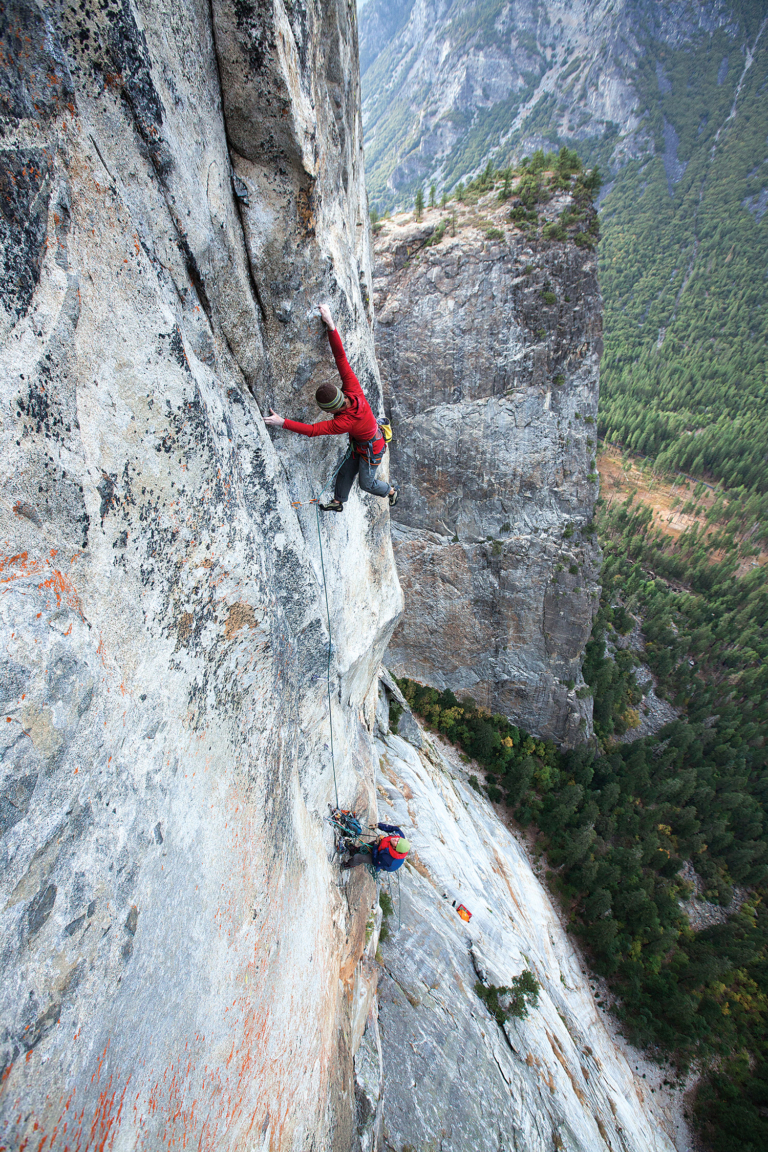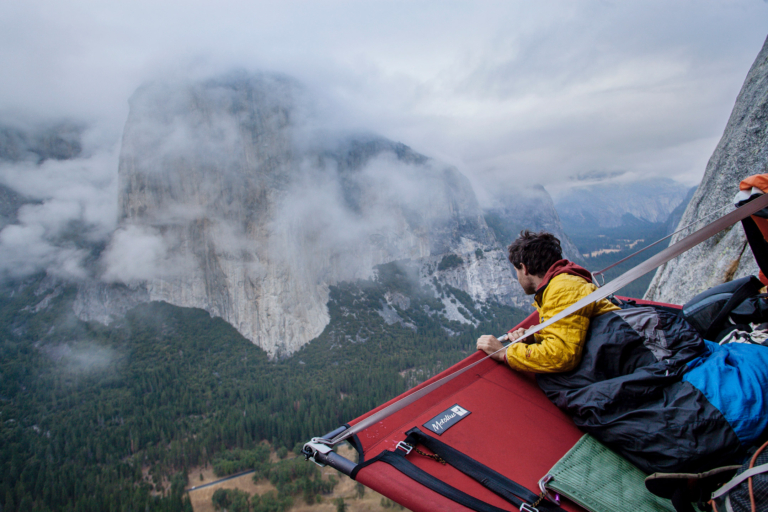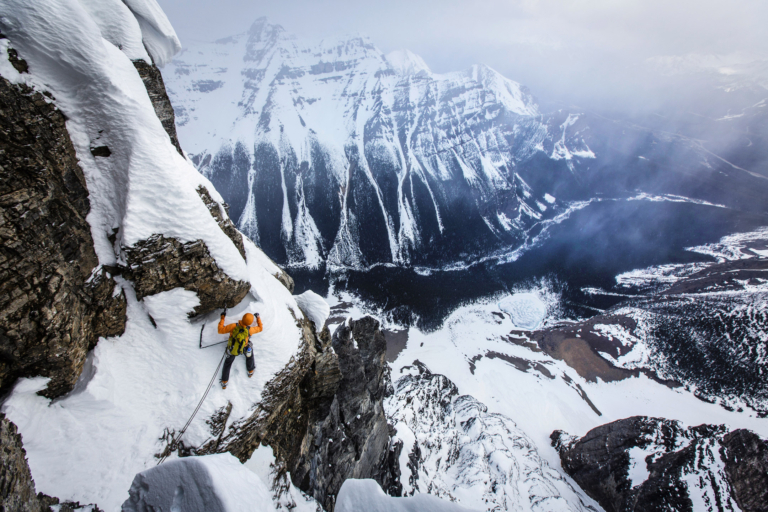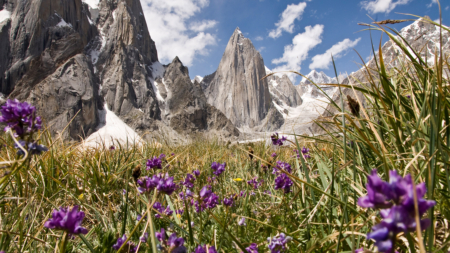Calculating Risk
Reflecting on a lifetime of climbing, and the risks and rewards that come with it.
What does risk actually mean? One standard dictionary defines risk as “a situation involving exposure to danger,” which is fitting in the context of climbing. But I believe this standard definition is too narrow. It fails to account for the different forms risk can take and focuses on the downside, while omitting its relationship with reward. Risk and reward are intrinsically linked, and both play a role in almost every decision we make as humans. This is especially true for climbers. It’s also a difficult concept to understand. It’s not as simple as the saying implies—the higher the risk, the higher the reward—because a failure to understand either variable can lead to unknown results.
The largest and most obvious risk we take as climbers is the possibility of physical harm or the furthest extreme of that—the loss of our lives. Anyone who has been around climbing for a reasonable amount of time is acutely aware of this reality. Though the chance of dying is the greatest consequence, the statistical probability is, thankfully, still quite low in most forms of climbing. Instead climbers seem to become more accepting of obtuse risks that don’t carry the same consequences but occur at greater frequencies—loss of relationships, financial hardship, loss of self-esteem and missed opportunities in other aspects of life; that is, a failure to fully engage in a world that isn’t totally immersed in climbing. Even though these risks don’t entail physical harm, it would be naive to think they don’t have serious impacts over a lifetime. Personally, I’ve struggled to maintain a healthy relationship with my significant other because climbing has often come first. I also wonder what would have happened if I’d stayed in college and maintained a more standard career track. Perhaps I’d feel more financially stable now.

Mikey Schaefer working on his new route, Father Time, on Middle Cathedral, Yosemite Valley. Photo: Jeff Johnson
But it’s human nature to focus more on loss and the downsides of risk than on the upsides of reward. This bias has informed human decision-making for centuries. It’s an evolutionary instinct intended to keep us safe. It would be fair to argue that climbers are affected by this bias less than many other groups in society. We do well at celebrating successes like standing on summits or completing years long climbing goals. These successes provide emotional rewards such as elevated self-esteem, confidence, prestige and increased peer recognition. Climbers are also rewarded with numerous health benefits. It’s been shown that physical activity can lead to a longer life. Since climbing is often social, and the community is small, it creates a sense of belonging to a group and increased social interaction, both of which have long-term health benefits. I learned this in high school. Struggling to fit in, I immersed myself in climbing, and my connection to that community grew stronger and stronger. The longer I’ve been a climber, the stronger and more rewarding these connections to that community have become.
Given the variations on risk and reward that come from climbing, there is no simple equation or model that can adequately determine the probability that taking on a certain risk will return a greater reward. If there were such an equation, I’m not sure I’d want to know the outcome as it might hinder those unknown and adventurous aspects of climbing that often lead to their own rewards. The risk-and-reward equation for climbing isn’t the same as the one that can be ascribed to a singular event like a sporting wager or a stock investment. Unlike the one-time bet, risks climbers need to account for have varying durations. Sometimes the risks are brief, as isolated as deciding if a hold is solid enough to support you while reaching for the next one. Sometimes they’re moderate, like the decision to climb a 15-pitch route with a forecast of inclement weather. And sometimes they’re longer, involving expeditions to remote parts of the world. The rewards are equally influenced by duration. The gained self-esteem that comes from climbing a difficult boulder problem might last only for a few hours or days, whereas the physical and mental benefits of spending so much time outside and exercising regularly might last a lifetime.

Mikey Schaefer on the first free ascent of Father Time on Yosemite’s Middle Cathedral. Photo: John Dickey
It is easy to think that $100 has the same value to everyone, but in fact the value is relative to the overall wealth of a person. A millionaire would hardly notice the addition or loss of $100, but to a minimum-wage worker, that same amount of money could have an enormous impact on quality of life. Sometimes this is how I think about the rewards we receive from climbing. The feeling and reward that is gained from completing one’s first 5.12 route will have more relative value at that time than when a climber climbs the hundredth route of the same grade. This diminishing return of reward value is possibly one reason climbers push themselves to complete riskier and harder objectives in the hope that the reward’s value will also increase. For others, there may be a new tipping point—with an eventual reduction in riskier climbs when the risk begins to outweigh the possible value of the reward. Looking back over my 27-year career as a climber, I’ve noticed a shift in the last third of it. My willingness to take greater risks has increased, yet I’ve also greatly reduced the amount of time I’m willing to do this. My overall volume of risk is probably the same, but when I do take risks, I believe they also yield higher values. I’ve also come to realize that the value of the reward I am getting isn’t limited to the impact it has on me, alone.
The actual activity of climbing generally occurs in smaller groups, and is often described as an individualist activity; it is assumed that the risks and rewards apply only to the participating individual and partner. This assumption is selfish. It fails to account for how the risks and rewards affect the climber’s families and communities. There are many points in my life where I’ve regretted the disappointment and stress that I’ve caused my mother. Sometimes it is just missing another holiday; sometimes it’s worse, like when she received a sat-phone call from my partner explaining that I was extremely sick and needed a helicopter rescue. But there are other situations when I think she’s benefited from the risks I’ve taken. I know she is extremely proud of what I’ve accomplished, and that, in turn, has made her feel she did a good job as a parent. Over the years I’ve come to realize, as I weigh risks and rewards, that I am not the only one who is going to be impacted by the outcome and that I should be taking others into account.

Jens Holsten making an early attempt of what would become the route Jardines Japoneses on Aguja Mermoz in Patagonia. Photo: Mikey Schaefer
When someone chooses to take a drive, they are accepting the risk and the possibility of being in an accident. When most rational people take this risk, they will do everything they can to mitigate it, which includes wearing a seat belt, driving a safe car and carrying insurance. Hedging our bets is a way of accepting risk but also protecting ourselves against negative outcomes. The simplest form of hedging for climbers is to use a rope. A rope is by no means mandatory, but most climbers believe that it will reduce the likelihood of injury or accident. Placing more protection on a pitch, wearing a helmet and having rescue insurance are all forms of hedging that can be done to accept the risk of climbing while minimizing any unforeseen consequences. It is interesting that climbers choose to accept a certain severity of risk yet then try to reduce that risk. Most of my partners would consider me to be a safe climber; though what they mean from a risk standpoint is that I am really good at hedging against the many possible risks. Still, over the years I’ve come to realize through experience that no amount of hedging can fully take away the possibility of a negative outcome, and those who believe it can are naive. The only guaranteed way to remove the risk from climbing is to stop climbing.
No two climbers are alike, and neither are their risk-and-reward equations. We have biases, different experiences, different levels of experience and different levels of innate risk tolerance. What I consider an acceptable risk and reward isn’t the same as what is acceptable for another climber. And I expect my views will continue to change as I age and gain new experiences. Ultimately the most important part of the risk-and-reward equation is breaking down each component as much as possible—understanding what you have to gain and what you have to lose, how to hedge against bad outcomes and how those outcomes not only affect you but those around you. I’m thankful that the risks I take in climbing are still providing a valuable enough reward and my equation says to keep climbing.

Josh Wharton finishing the last pitch of pitch of the Greenwood-Locke route on a rare wintry ascent of Mount Temple in the Canadian Rockies. Photo: Mikey Schaefer

